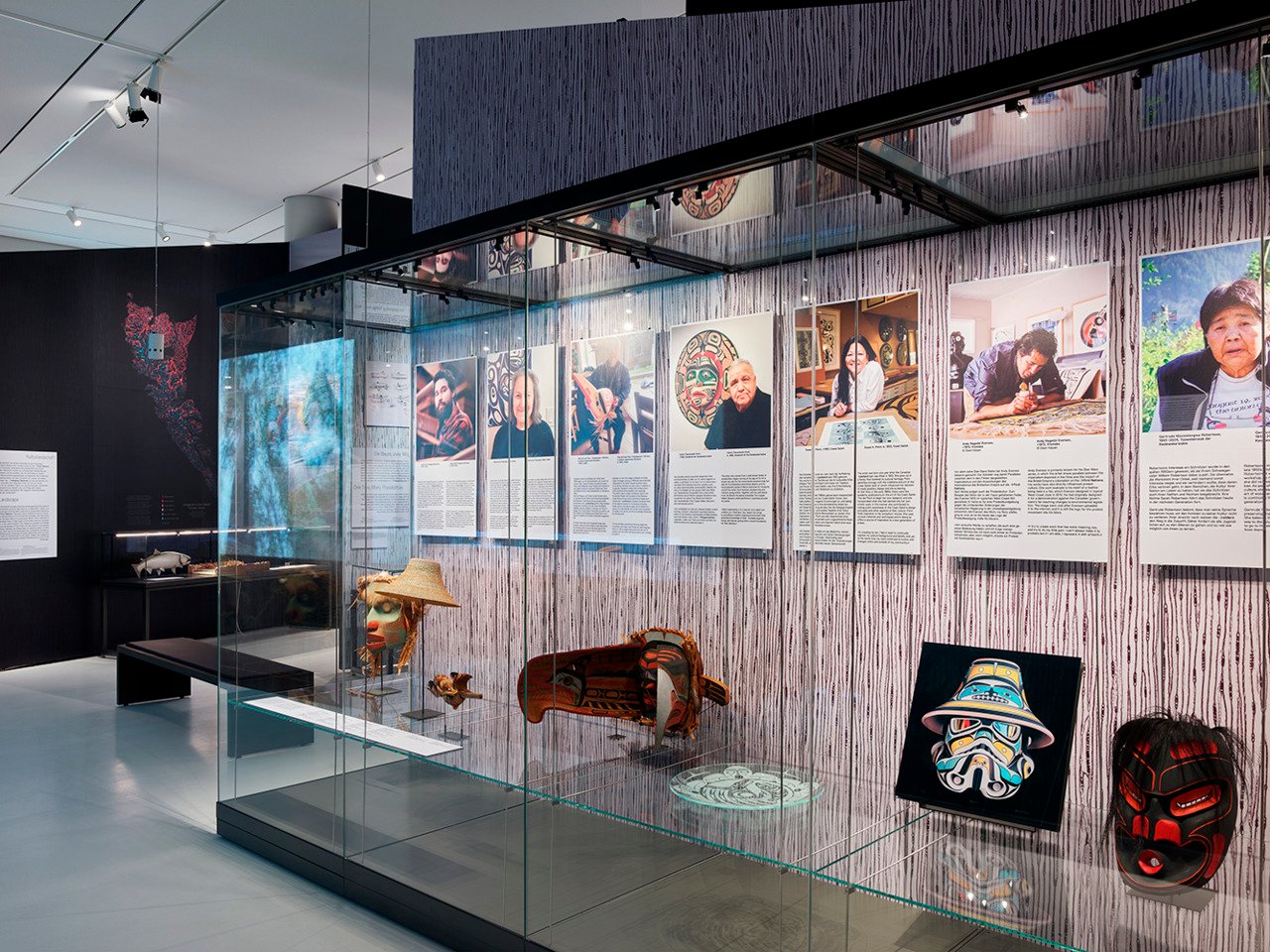Ts'uu - Cedar
until 23.02.2026
{{ time.start_TS | TS2dateFormat('MMM') }}
{{ time.start_TS | TS2dateFormat('YYYY') }}
| English, German |
| 2nd Floor |
| Opening hours Mon, Wed, Thu, Fri, Sat, Sun: 10:30 am – 6:30 pm Tue: closed |
“…when the trees are gone, we’ll just be like everybody else.” – Gidansda Guujaaw, artist and former president of the Haida Nation
For millennia, people and land have been inextricably linked in Canada’s coastal rainforests. An example of this is the special importance cedar trees hold for the First Nations living there: cedars provide the raw material for a wide range of everyday objects and ceremonial objects. They play a central role in handed-down stories, traditions, and ceremonies.
Based on the “giant tree of life” (western red cedar) and the “Nootka cypress” (yellow cedar), the exhibition tells of the relationship between humans and the environment. Eight chapters highlight the relations between coastal rainforests, First Nations, and Euro-Canadians, the effects of colonisation, and the resurgence of First Nations.
One focus is on recent history: colonization by Europeans from the eighteenth century led to the systematic displacement of the First Nations and curtailment of their rights. At the same time, large parts of the coastal rainforest habitat were destroyed by the development of industrial forestry. Both had, and continue to have, far-reaching effects on First Nations cultures and their relationship to cedar. For this reason, the cedar plays a special role today in the resurgence of the First Nations and the way they see themselves: be it in the anti-forestry movements; in land and resource use based on traditional ecological knowledge; or in the reappropriation of cultural practices and traditions.
The exhibition, developed in cooperation with the Haida Gwaii Museum in British Columbia, presents over 130 exhibits, including tools for working the wood, media installations, cultural historical and natural history exhibits as well as contemporary artworks. An additional integral part of the gallery are two cedar totem poles from the collection of the Ethnologisches Museum of the Staatliche Museen zu Berlin. The variety of the displayed objects and the transdisciplinary approach make it possible to explore the cedar-related topics and issue on several levels.
Ts’uu – Cedar is an exhibition of the Stiftung Humboldt Forum im Berliner Schloss in collaboration with the Haida Gwaii Museum at Kay Llnagaay in British Columbia, Canada. With the expert advice of the Ethnologisches Museum der Staatlichen Museen zu Berlin – Preußischer Kulturbesitz.
